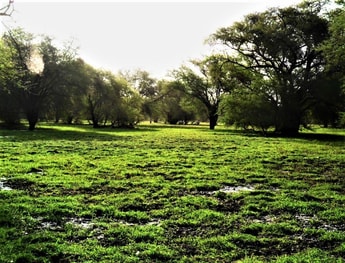
Sudan & Environment
With an area of 1.88 million square kilometres and a population of about 40 million, Sudan is located in Northeast Africa, bordered by seven countries and a coastline on the Red Sea. Sudan is mostly flat with some mountains in the Red Sea and Darfur regions such as Jebal Marra which are considered as the highest mountains in the country, rising to 3,042 metres. Sudan has a wide range of climatic zones that have endowed the country with natural resources such as plentiful water along with agriculture, rangelands, forests, livestock, minerals and wildlife. However, Sudan’s environment and natural resources have suffered from prolonged exploitation, mismanagement and conflicts. This has led to severe depletion and deterioration of these resources over time. Today, Sudan is facing
...many environmental pressing challenges such as desertification, land degradation and droughts, loss of biodiversity, climate change, lack of sanitation services, poor solid waste management and poor urban planning.
Sudan has ratified several regional and international environmental conventions (for details, click here ). The Government of Sudan established the first environmental body in 1992; the Higher Council for Environment and Natural Resources (HCENR). In 1995 the first Ministry devoted to the environment was established " Ministry of Environment and Tourism". The structure of environmental institutions in Sudan has been going through continuous changes ever since. Recently, in April 2020, the Transitional Government announced HCENR as the highest environmental authority.
Besides the government sector, several non-governmental organizations are active in the environmental field covering various areas. The Sudanese Environment Conservation Society (SECS) is the oldest NGO, which was established in 1975. SECS aims to raise environmental awareness and implementation of environment rehabilitation interventions.
Addressing Sudan’s environmental issues is crucial to achieve sustainable development. However, this cannot be done without fostering effective collaboration between individuals, NGOs, Government, and International Agencies.
Read More